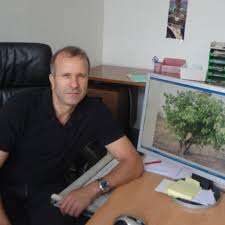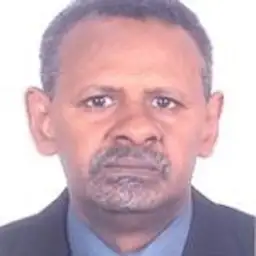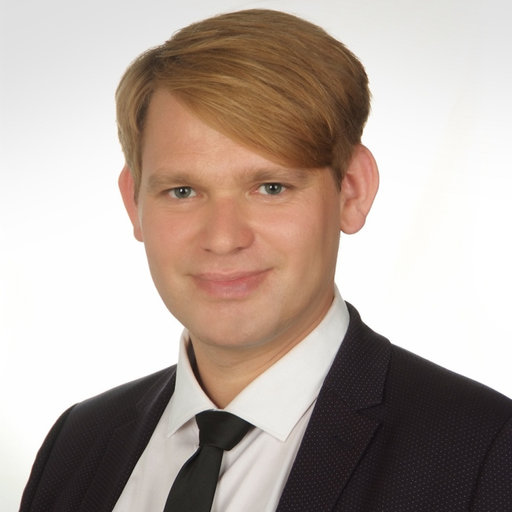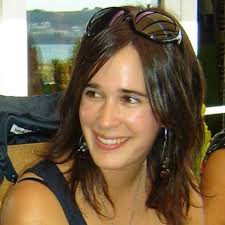Scientific Program
Keynote Session:
Title: Alkyne annulation: Step-economic construction of core structures of natural products and drugs
Biography:
Ruimao Hua received his Doctor of Philosophy degree in Environmental Chemistry and Engineering from Tokyo Institute of Technology (Japan) in 1996, he then spent six years at the National Institute of Materials and Chemical Research to develop the methodologies of organic synthesis. In April of 2002, he joined Department of Chemistry at Tsinghua University, and his research interests are on the alkyne chemistry & organic materials for displays (liquid crystal display & OLED display).
Abstract:
We are interested in development of the applications of alkynes in the synthesis of carbo- and heterocyclic compounds via their annulation with high-atom utilization and step-economy. In this presentation, we would like to report the recently developed protocols for the synthesis of natural products such as Precocene I (from Ageratum houstonianum), Cassiarin C (from Cassia siamea) from the cyclocondensation of alkynes with the activation of C-H bonds, and the synthesis of the drugs such as h5-HT2A antagonist and RITA. These synthetic protocols have the significant advantages of easily available starting materials, efficient and step-economic processes
Title: Innovative surfactants as stabilizers of membrane proteins for structural studies in solution
Biography:
Ahcene BOUMENDJEL currentely working at Universite Grenoble Alpes/CNRS as seniour scientit.
Abstract:
Membrane proteins (MPs) account for 25-30% of proteomes and present over 70% of the pharmaceutical targets. MPs play key roles in the transport of a large panel of compounds through the cell membrane. The presence of MPs in the hydrophobic cell membrane makes them difficult to be isolated in their functional forms and to be crystallized for further steps to a 3D-structure resolution and ultimately to be used as targets in the structure-based drug design approaches. As a consequence, membranes proteins account for less than 5% of the 3Dstructures resolved. In this context, surfactants (detergents) are used as key components during the extraction and structural studies of MPs. Detergents are required for maintaining MPs in solution for crystallography needs. Unfortunately, major detergents tend to unfold these proteins as they are in fast-exchange equilibrium with micelles, weakening the compactness of the membrane region and leading to a partial-to-severe loss of functionality. Based on the concept that the vast majority of membranes proteins share a net enrichment in basic residues at the interface between membrane and cytoplasm, a property known as the positive-inside rule, we conceived a new class of detergents based on this feature, which, in addition to their capacity to interact with membranes proteins through hydrophobic interactions, will have the additional capacity to generate a network of salt bridges around the membrane region with these basic residues. Our main focus will deal with the design, the chemical synthesis and the outcome of new generation of detergents for the extraction, stabilization and crystallization of membrane proteins.
Title: Sustainable Development of Bioenergy from Agriculture Residues and Environment
Biography:
Abdeen Mustafa Omer (BSc, MSc, PhD) is an Associate Researcher at Energy Research Institute (ERI). He obtained both his PhD degree in the Built Environment and Master of Philosophy degree in Renewable Energy Technologies from the University of Nottingham. He is qualified Mechanical Engineer with a proven track record within the water industry and renewable energy technologies. He has been graduated from University of El Menoufia, Egypt, BSc in Mechanical Engineering. His previous experience involved being a member of the research team at the National Council for Research/Energy Research Institute in Sudan and working director of research and development for National Water Equipment Manufacturing Co. Ltd., Sudan. He has been listed in the book WHO’S WHO in the World 2005, 2006, 2007 and 2010. He has published over 300 papers in peer-reviewed journals, 200 review articles, 15 books and 150 chapters in books.
Abstract:
People are relying upon oil for primary energy and this will continue for a few more decades. Other conventional sources may be more enduring, but are not without serious disadvantages. The renewable energy resources are particularly suited for the provision of rural power supplies and a major advantage is that equipment such as flat plate solar driers, wind machines, etc., can be constructed using local resources. Without the advantage results from the feasibility of local maintenance and the general encouragement such local manufacture gives to the buildup of small-scale rural based industry. This communication comprises a comprehensive review of energy sources, the environment and sustainable development. It includes the renewable energy technologies, energy efficiency systems, energy conservation scenarios, energy savings in greenhouses environment and other mitigation measures necessary to reduce climate change. This study gives some examples of small-scale energy converters, nevertheless it should be noted that small conventional, i.e., engines are currently the major source of power in rural areas and will continue to be so for a long time to come. There is a need for some further development to suit local conditions, to minimise spares holdings, to maximise the interchangeability of the engine parts, and of the engine applications. Emphasis should be placed on full local manufacture. It is concluded that renewable environmentally friendly energy must be encouraged, promoted, implemented and demonstrated by a full-scale plant (device) especially for use in remote rural areas.
Title: The Potential Biologically Active Epoxides Drived from Safranal via thermal and photo epoxidation reactions
Biography:
Suzan Khayyat is currentely working at University of Jeddah as a seniour proffessor.
Abstract:
Oral Session 1:
- Medicinal Chemistry
Chair
Jean Marie Poffe
Belgium
Co-Chair
Ruimao Hua
Tsinghua University
Title: New photosensitizing drugs for photodynamic therapy of resistant cancers and microbes
Biography:
Janusz M. DÄ…browski is an associate professor at the Faculty of Chemistry, Jagiellonian University. He is affiliated with JU from 2005, where he obtained his MSc degree in in 2005, PhD in 2009 and DSc (habilitation) in 2018. After finishing his PhD he spent 2 years as a postdoctoral fellow in the group of Prof. Luis G. Arnaut exploring photochemistry of new bacteriochlorin-based anticancer drugs. He has received several prizes and fellowships (from the Rector of the Jagiellonian University.
Abstract:
The major challenges in modern medicine encompass drug-resistance associated with advanced stage diseases that cannot be completely cured. Emerging evidence suggests that the unique mechanisms of photodynamic therapy (PDT) could be utilized to overcome drug resistance and even to re-sensitize resistant cells to standard therapies. Moreover, with the development of nanotechnology, light activation may be used not only to damage biological targets but also to enable controlled drug release to inhibit escape pathways that may lead to resistance or cell proliferation.
The purpose of our studies is to determine and compare properties of structurally related but with various polarity bacteriochlorins in the context of their biomedical applications. The in vitro biological activity has been investigated against A549, B16F10 and CT26 cancer cells. The optimal formulation for photosensitizers and their time-dependent cellular uptake were described and characterized by fluorescence microscopy, dynamic light scattering (DLS) and transmission electron microscopy (TEM). We have demonstrated that Pluronic P123 efficiently loads hydrophobic and amphiphilic photosensitizers, increases their stability, improves cellular uptake, biodistribution, pharmacokinetics and enables the efficient generation of hydroxyl radicals resulting in efficient PDT of various types of cancers including melanoma.3 Designed by us photosensitizers with pH-sensitive block copolymers overcome the resistance of melanoma to PDT due to increased selectivity towards tumor and combine effect of oxidative stress in target tissue with a systemic immune response triggered by acute, local inflammation.
Moreover, our most recent studies on strategies with multiple mechanisms of action based on light-activated hybrid materials, to overcome the pathogen's resistance will be discussed. The antimicrobial activity of these new entities in combination with light was tested against gram-positive, gram-negative bacteria and fungi. The unique structural and spectroscopic properties as well as redox or photochemical reactivity makes these materials appropriate to provide innovative antimicrobial platforms with simultaneous prevention of resistance development.
Title: Progress on the design of metal-based drugs for cancer therapy
Biography:
Abstract:
Title: Synthesis of different sulfoxide from its corresponding sulfide by plant enzyme
Biography:
Pratibha Yadav is working as a PDF in IIT Delhi, New Delhi, India. She has joined IIT Delhi in May 2014. She has been synthesized sulfoxides and epoxides by plant enzyme. She is working on structural and functional studies of plant enzymes in IIT Delhi, India. Use of enzymes in organic synthesis as reagents are preferred because enzyme catalyzed reactions are efficient, specific, occur under milder conditions, ecofriendly and optically pure isomers are obtained which are pharmaceutically important. She has worked as an Assistant Professor in Gurgaon College of Engineering from 2011 to April 2014. She has been joined research for Ph.D. on the topic “Partial Purification & Biotechnological Applications of Some Peroxidases” in the Department of Chemistry DDU Gorakhpur University, Gorakhpur, India, in 2006. During this period, she has isolated, purified and characterized four Peroxidases and one other enzyme Laccase from the plant source.
Abstract:
Chiral organic sulfoxides are important synthons and chiral auxiliaries in synthetic organic chemistry. Therefore synthesis of chiral sulfoxide is an active area of continuing research interest. The most common method for the preparation of sulfoxide is by the oxidation of their corresponding sulfides. Both the chemical and biological catalysts have been developed for this purpose. Though the reaction conditions for the preparation of chiral organic sulfoxides. With hope that some of them will produce the desired sulfoxidation in a good enantiomeric excess. Being involving biological catalysts are milder and ecofriendly in comparison to those involving chemical catalysts, they are of limited practical use.
This communication reports a crude preparation of chloroperoxidase from plant which can be conveniently prepared and used for the transformation of different sulfide to its sulfoxide. This is the report of sulfoxide formation using a plant enzyme.
The method for the preparation of enzyme from plant has been developed. The enzymatic characteristics like Km for the substrates sulfide and H2O2, pH and temperature optima of the enzyme have been determined. The enzymatic transformation of different sulfide to its sulfoxide has been demonstrated. The results of the above studies will be presented in the conference.
Title: Targeting cancer with selective and potent ruthenium compounds
Biography:
Abstract:
Keynote Session:
Title: :Hydrogen Transfer Mechanisms in the use of Red Mud Catalyst as a Direct Coal and/or Biomass Liquefaction Catalyst
Biography:
Mirosław Kwiatkowski in 2004 obtained Ph.D. degree at the AGH University of Science and Technology in Krakow (Poland), and in 2018 D.Sc. degree at the Wrocław University of Technology (Poland). His published work includes more than 45 papers in reputable international journals and 90 conference proceedings. He is the editor in chief of The International Journal of System Modeling and Simulation (United Arab Emirates), an associate editor of Micro & Nano Letters Journal (United Kingdom) and a member of the editorial board of internationals journals as well as a member of the organizing committees many international conferences in Europe, Asia and USA. Dr. hab. eng. Mirosław Kwiatkowski is also a regular reviewer in a most reputable scientific journals. His research interest include: chemical technology, chemistry and physical chemistry, nanotechnology, material science and engineering, mathematical modelling of the adsorption process, computer science, electrical energy markets and problems connected with economics and management.
Abstract:
Recent years have seen a substantial emphasis on the development of hydrogen storage methods, where high hopes have been pinned on the use of modified activated carbons1–3. Still, the selection of the methods and conditions of producing such activated carbons requires a thorough and accurate analysis of their structure. The work presents the results of microporous structure analysis carried out by means of the LBET method4–5 on activated carbons obtained by chemical activation using a mixed combination of KOH and borax decahydrate (BDH) as a source of boron; the activated carbons in question were described in the paper [1]. The results of analyses of the porous structure of activated carbons carried out on the basis of nitrogen adsorption isotherms with the use of the LBET method are presented in Figure 1 and in Table 1.










